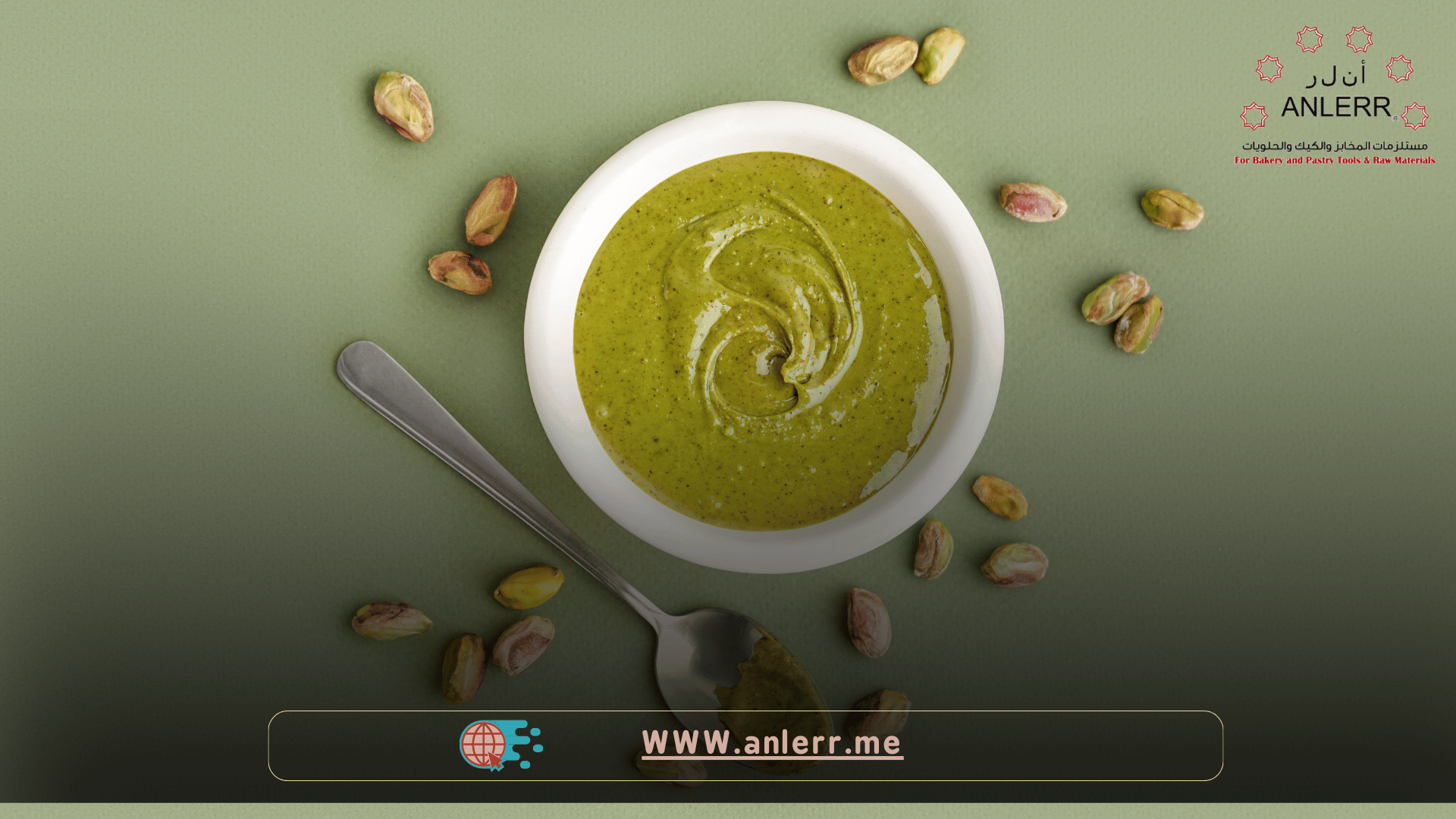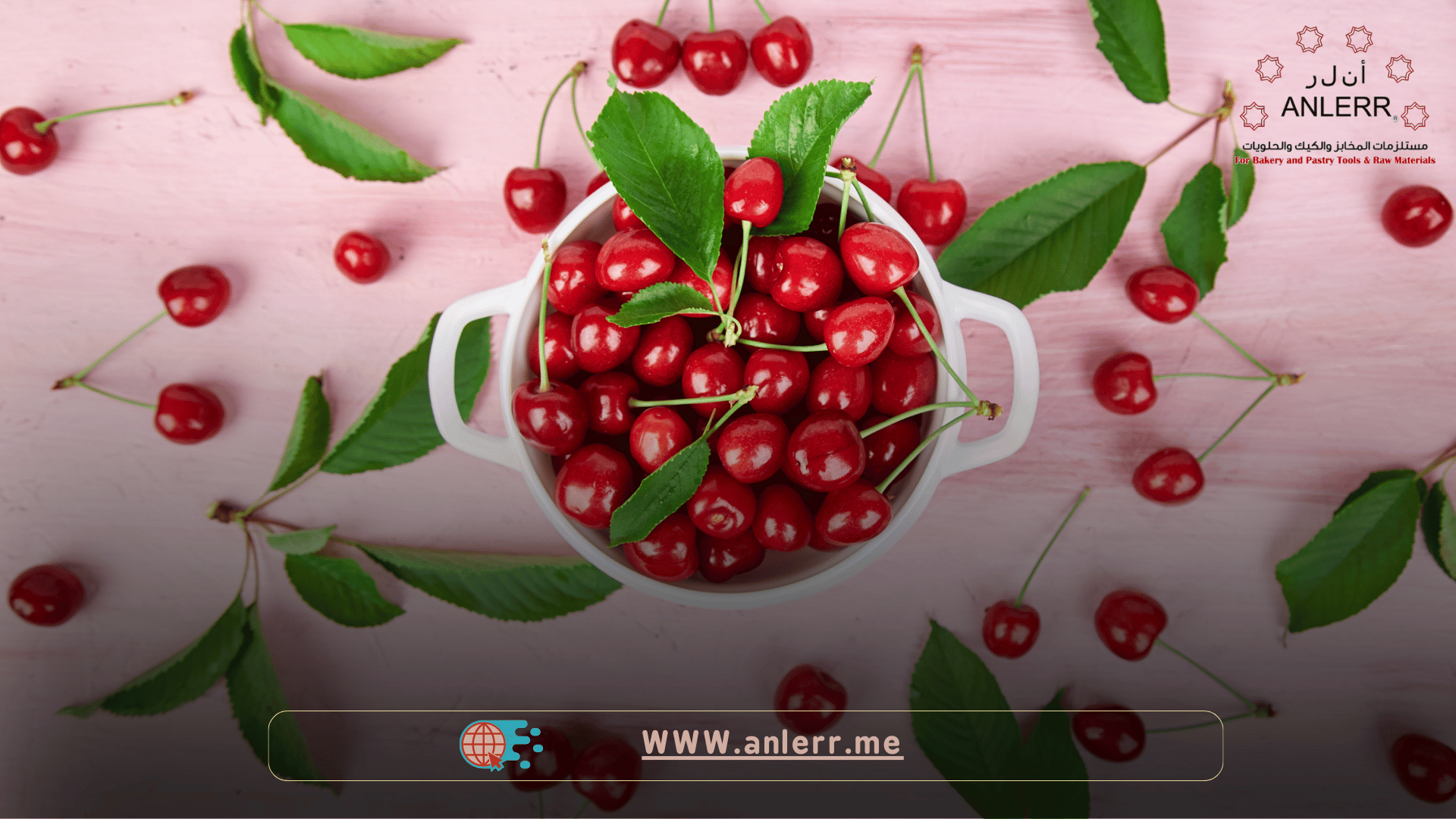In the world of desserts and gourmet cuisine, unique ingredients are becoming increasingly important for adding rich flavors and creative touches to dishes. Among these ingredients, Pistachio Cream, Glucose Syrup, and Red Cherries stand out as essential components used in making sweets, baked goods, and even some savory dishes. These are not just flavors—they are artistic tools in the hands of chefs and dessert enthusiasts.
In this article, we will explore the top uses of Pistachio Cream, Glucose Syrup, and Red Cherries, dive into their benefits and applications, and share a recent statistic that supports the importance of these ingredients in the food and dessert industry. We will also answer the most common questions cooking lovers have about these ingredients.
First: Pistachio Cream – The Green Gold of the Culinary World
Pistachio cream is one of the luxurious ingredients increasingly consumed in global kitchens, especially in Italian and French pastry making. It is a smooth blend made from ground pistachios, often mixed with butter, condensed milk, or sugar depending on the recipe.
Uses of Pistachio Cream:
- In desserts: Used as a filling for croissants, donuts, macarons, tarts, and cheesecake.
- As a topping: Added as an upper layer on cakes, or blended with white chocolate to create elegant flavors.
- In ice cream making: One of the most popular flavors in ice cream shops, adding a rich taste and unique creamy texture.
- In savory cooking: Used in some cuisines as an ingredient in sauces or with white meats to create a delicious flavor contrast.
Pistachio cream is known for its distinctive green color, which reflects the quality of the pistachios used. With growing global demand for natural products and rich flavors, pistachio cream sales have significantly increased in recent years.

Second: Glucose – The Backbone of the Confectionery Industry
Glucose is a fundamental component in the world of sweets. It is a type of simple sugar commonly derived from corn starch. Glucose syrup is not just a sweetener—it plays a crucial role in maintaining the texture of products and preventing crystallization.
Uses of Glucose:
- In caramel and chocolate: Prevents sugar crystallization and provides a smooth consistency.
- In marshmallows and lollipops: Acts as a stabilizer and sweetener, helping maintain softness.
- In frozen desserts: Prevents hard freezing in ice cream, enhancing creaminess and smooth texture.
- In bread and baked goods: Used to improve softness and extend shelf life.
Glucose is widely used in the food industry, and a 2023 study by the International Confectionery and Bakery Association revealed that more than 80% of industrial confectionery companies rely on glucose in their core products.

Third: Red Cherries – The Perfect Garnish with Rich Flavor
Preserved or candied red cherries have been used for decades as a flavorful garnish in many desserts. They are prepared by soaking fresh cherries in a sugary syrup, allowing them to retain their vibrant red color and distinctive sweet taste.
Uses of Red Cherries:
- For decoration: Placed on top of cakes, cupcakes, and ice cream.
- In salads and cold desserts: Such as fruit salad, jelly, and pancakes.
- In beverages: Used in cocktails and juices to add an appealing visual touch and a delicious flavor.
- In some savory recipes: Occasionally added to selected meat dishes to create a sweet-and-sour flavor contrast.
Red cherries are not just used for their taste, but also for their eye-catching appearance that enhances the beauty of any dish—making it visually tempting before the first bite.

Combining the Three Ingredients in One Recipe
What’s truly exciting is that these three ingredients—pistachio cream, glucose syrup, and red cherries—can be harmoniously combined in a single elegant dessert that is both eye-catching and delightfully flavorful.
For example, you can create a pistachio cheesecake topped with a glossy red cherry layer, using glucose syrup to achieve a smooth, shiny sauce texture. Glucose can also be incorporated into the cream filling to help stabilize its consistency, making the cake firmer and more presentable when served.
These innovative recipes highlight how the interaction of diverse ingredients can lead to extraordinary results that blend flavor, appearance, and texture into one unforgettable culinary experience.
Recent Statistics: Growing Demand for These Ingredients
According to a 2024 report by Market Research Future, the luxury dessert ingredients market is expected to grow at an annual rate of 6.7% until 2030, with key insights including:
- Pistachio cream is one of the fastest-growing flavor trends in European markets.
- Glucose syrup is used in over 75% of global confectionery products.
- Red cherries are making a strong comeback as a classic component in both traditional and modern desserts.
Frequently Asked Questions
1. Is pistachio cream healthy?
It depends on the ingredients used. If the cream is natural and free from artificial additives, it's rich in healthy fats and proteins—but it remains high in calories, so moderation is key.
2. Can glucose be substituted with honey?
Yes, in some recipes honey can be used as a substitute. However, its stronger flavor may alter the final taste, and it doesn’t prevent crystallization as effectively as glucose.
3. How should red cherries be stored after opening?
It’s best to store them in the refrigerator in an airtight container. For optimal flavor and quality, consume within 3–4 weeks.
4. Can pistachio cream be used in coffee?
Absolutely. Mix a spoonful into hot milk to create a rich pistachio latte, a beverage that's gaining popularity in upscale coffee shops.
5. Is glucose harmful to health?
Natural glucose isn’t harmful when consumed in moderation. However, excessive intake should be avoided—especially by individuals with diabetes—as it can quickly raise blood sugar levels.
Conclusion
Pistachio cream, glucose syrup, and red cherries are more than just ingredients—they are symbols of creativity and rich flavor in the culinary world. Their versatility makes them favorites among chefs and home bakers alike.
Whether you're a seasoned pastry expert or an enthusiastic home cook, these ingredients empower you to innovate and experiment in your kitchen. As the demand for premium and distinctive flavors continues to rise, these components will remain central to shaping the future of refined and luxurious cuisine.

